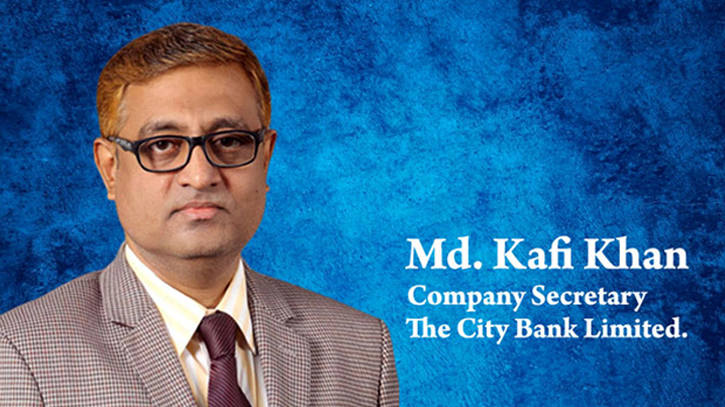
Photo : Messenger
The growth projections for the buy now, pay later business in 2024 are generally optimistic. But things aren’t all upbeat. A new study by Juniper Research projects that the global buy now, pay later transaction value will more than double in the next four years, from $334 billion in 2024 to $687 billion in 2028. Activity will spread to new markets. Getting into it a little deeper, it realised that a lot of the volume was discount-driven. That didn’t change the numbers, but nevertheless took some of the wind out of their sails.
So far, I haven’t seen an increase in cost, and haven’t seen an increase in unemployment. But when it sees what is happening in the AI area, I would be very surprised if we didn’t see growth in unemployment associated with artificial intelligence. As the BNPL business evolves further in 2024, banks will also play an increasing role in the business, both through installment financing extended via their credit card programs and through more specialised programs. The field could shift significantly. In a late 2023 report, Moody’s Investors Service wrote, “This year and next will be crucial for many [BNPL] firms as they strive to reduce costs and increase revenue while maintaining volume growth and market shares. Failure to achieve these goals may result in incumbent banks dominating the market and displacing most BNPL providers. There’s also the matter of funding. Banks can raise insured deposits, but nonbank fintech BNPL players typically need to obtain funding from investors.
Much of the banking industry's participation in BNPL is through the credit card installment plan options offered by the largest players, including Chase, Citibank, American Express and others. There is also a growing group of large institutions providing merchant-side BNPL programs. But down the road, there may be openings for smaller depository institutions with smaller card programs that are agile and willing to think outside of the card. There could be opportunities to develop new revenue in several ways. These could range from actually offering a BNPL program yourself to offering wholesale funding lines or access to a deposit-heavy balance sheet.
Sources of the Growth in Buy Now, Pay Later: The growth in BNPL has been driven to a large extent by a higher interest rate and inflation-fighting efforts. Even though real personal disposable income grew a little at the end of 2023, for many consumers, a gap remained. Savings buffers have worn thin for many adults after several years of sustained price growth, leading consumers to more often supplement their income with debt to cover purchases. In the context of high-interest rates, however, consumers’ preferred means of debt usage is evolving and the added pressure to spend on holiday shopping has accelerated the adoption of BNPL as an alternative to credit card debt. Following the 2023 holiday season, press coverage about people getting in over their heads with BNPL has been growing. For perspective’s sake, remember that before BNPL existed, the same kinds of stories appeared about credit cards. For all the marketing, debt is debt.
Apple Pay Later, matched by Google Wallet BNPL Partnerships: It can’t talk about the future of buy now, pay later without touching on Apple Pay Later, which is now available to all Apple Pay users. This option is contained in the Apple “walled garden” If it doesn’t have an iPhone, you can’t use any of it. But now Android users will have an option of their own. In late 2023, Google Pay announced a pair of joint efforts to bring BNPL to its users. Beginning in January, the company is piloting BNPL options for users with both Affirm and Zip. Apple and now Google's moves have dual significance. First, this reflects a shift in how consumer purchases are financed. Decades ago, credit cards melded a payment vehicle with a financing vehicle, the credit line. Apple decoupled the two and coupled the financing piece to the digital wallet. The second aspect of the change concerns distribution, which is how Google Pay’s strategy differs. Apple Pay Later is financed by an Apple subsidiary, but Google Pay represents a pair of collaborations that give two BNPL companies entrée to new transaction streams.
In the context of the Bangladesh buy now-pay later mechanism, the analysis shows that education, an increase in the demand for luxury goods and an improvement in the standard of living availing of this payment mode have a significant impact on increasing the value of the yearly purchase of products through the buy now-pay later mechanism. This increase in the expenditure also reveals the impulsive purchase decisions of the consumers. The findings of the study suggest that a more developed banking and financial system, minimising the inter-bank variation regarding payment mechanisms, increased availability and accessibility of information, and the availability of buy now-pay later mechanisms in retail stores and all possible places can lead towards a better outcome.
The current era is highly competitive. With the passage of time, consumers are demonstrating diversified demand for a wide variety of products. But resources are limited. So, there crops up the problem of meeting unlimited wants with limited resources. Different modern payment mechanisms such as buy now-pay later, have evolved as an art to meet the unlimited wants with limited resources. This mechanism puts the customer at ease. They can purchase the required commodity in the current period, overcoming the cash constraint and make the payment later on. Consumers’ purchases vary with the nature of the product and also the payment mechanism. The decisions to buy inexpensive, daily necessary products, expensive appliances and luxury items are quite different. Companies are coming up with new marketing strategies. Government policies to increase the literacy rate, support higher education and establish subsidised educational institutions with quality education can create awareness among the consumers regarding how to maximise their utility with a limited budget using different payment tools.
There is an overwhelming need for bringing a change in the buy now-pay later mechanism for moving towards a much better outcome for the consumers. Currency outside banks is really high in Bangladesh, indicative of the poor banking habits of the citizens of this country. A more developed banking and financial system, minimization of inter-bank variation in the condition of lending, backed by adequate infrastructure, a trained workforce, 24-hour customer care service, increased availability and accessibility of information and development of credit card guidelines can benefit the customers.
Moreover, at the time of the installment sale, both sellers and credit card issuers should provide the consumers with proper information regarding payment mode and period, and the rate of interest. If shops and sales outlets keep the option for making purchase via credit cards and relevant payment mechanisms offering buy now-pay later option, consumers will be highly benefited. Extension of the maximum period of payment with 0% interest can add to the satisfaction of the customers. In addition, customers are often dissatisfied at the security issues of credit cards.
PIN (Personal Identification Number) should be used for making all kinds of transactions through credit cards. Transactions without the consent of the card-holder should not be allowed until the matter is notified to the card-issuing authority. Though most of the banks assign PIN number for the credit cards, there are still some banks whose do not have any PIN. The concerned authorities should be very strict to deal with this issue to safeguard the interests of customers. cards do not have any PIN. The concerned authorities should be very strict to deal with this issue to safeguard the interest of customers.
The writer is the Company Secretary of City Bank PLC
Messenger/Fameema








